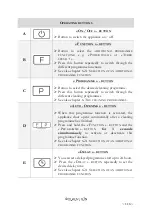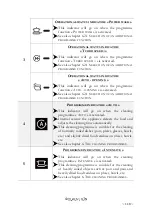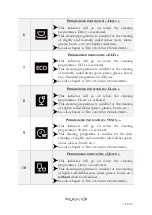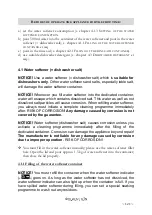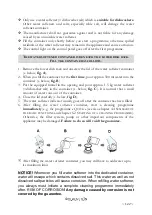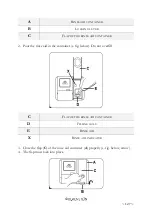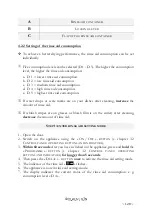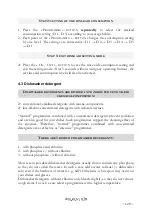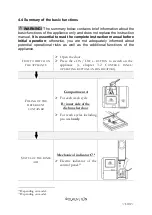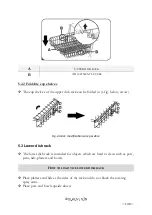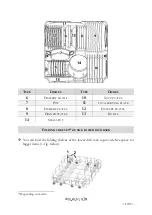
~
129
~
S
TEP
2:
SETTING OF THE RINSE AID CONSUMPTION
1.
Press the « P
ROGRAMME
» -
BUTTON
repeatedly
to select the desired
consumption setting (D 1 - D 5) according to your usage habits.
2.
Each press of the « P
ROGRAMME
» -
BUTTON
changes the consumption setting
by one level. The settings are consecutive: D 1
→
D 2
→
D 3
→
D 4
→
D 5
→
D 1.
S
TEP
3:
EXIT RINSE AID SETTING MODE
➢
Press the « O
N
/ O
FF
» -
BUTTON
to save the rinse aid consumption setting and
exit the setting mode. After 5 seconds without using any operating buttons, the
set rinse aid consumption level will also be activated.
4.3 Dishwasher detergent
D
ISHWASHER DETERGENTS ARE DIVIDED INTO
2
GROUPS DUE TO THEIR
CHEMICAL COMPOSITION
:
➢
conventional, alkaline detergents with caustic components.
➢
low-alkaline concentrated detergents with natural enzymes.
"Normal" programmes combined with concentrated detergents prevent pollution
and are also good for your dishes. Such programmes support the cleaning effect of
the enzymes. Therefore, "normal" programmes combined with concentrated
detergents are as effective as "intensive" programmes.
T
HERE ARE
3
KINDS OF DISHWASHER DETERGENTS
:
1.
with phosphate and chlorine.
2.
with phosphate / without chlorine
3.
without phosphate / without chlorine
Most recent powdered dishwasher detergents usually do not contain any phosphate,
so they do not soften the water. In such a case add a water softener (= dishwasher
salt) even if the hardness of water is e.g., 6dH. Otherwise, white spots may occur on
your dishes and glasses.
Dishwasher detergents without chlorine only bleach slightly, so they do not remove
tough stains. In such a case select a programme with a higher temperature.


